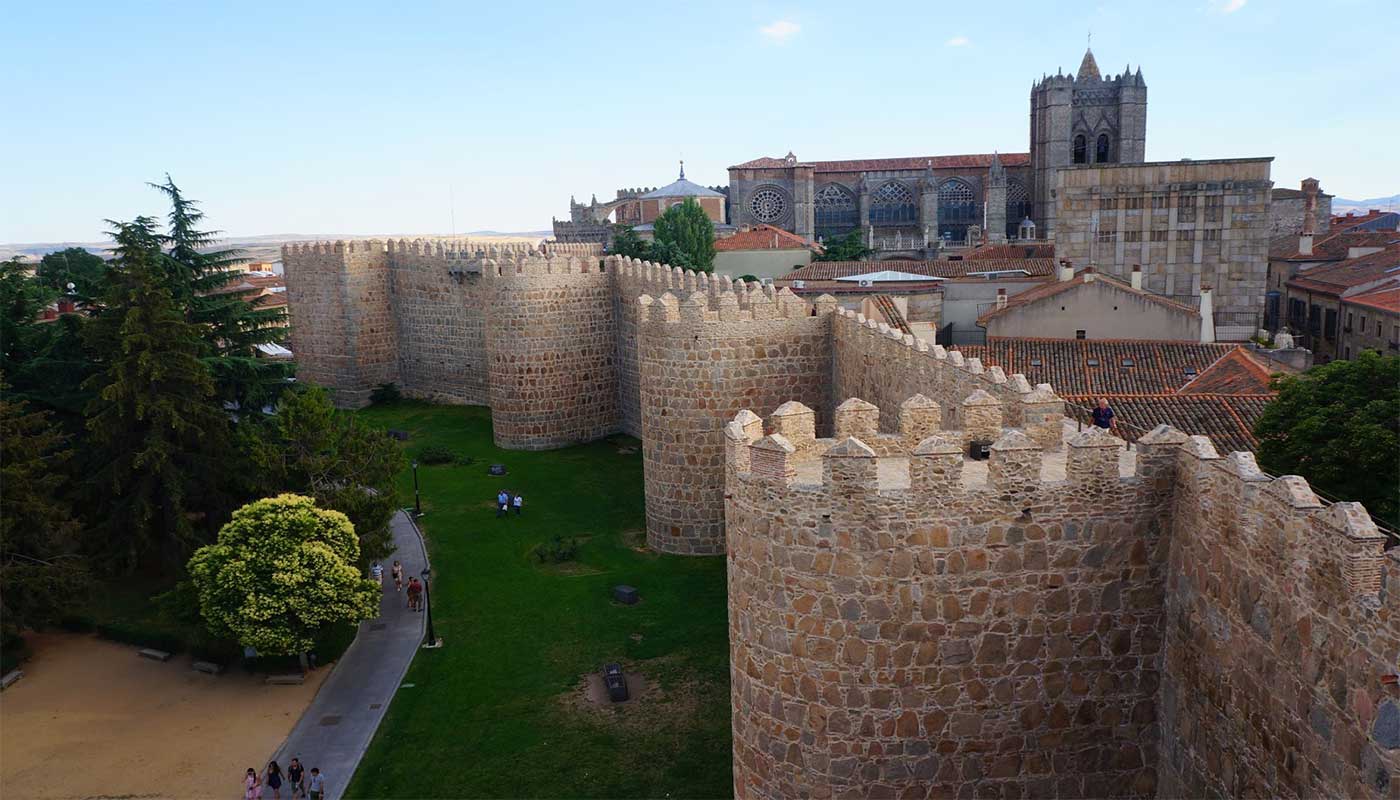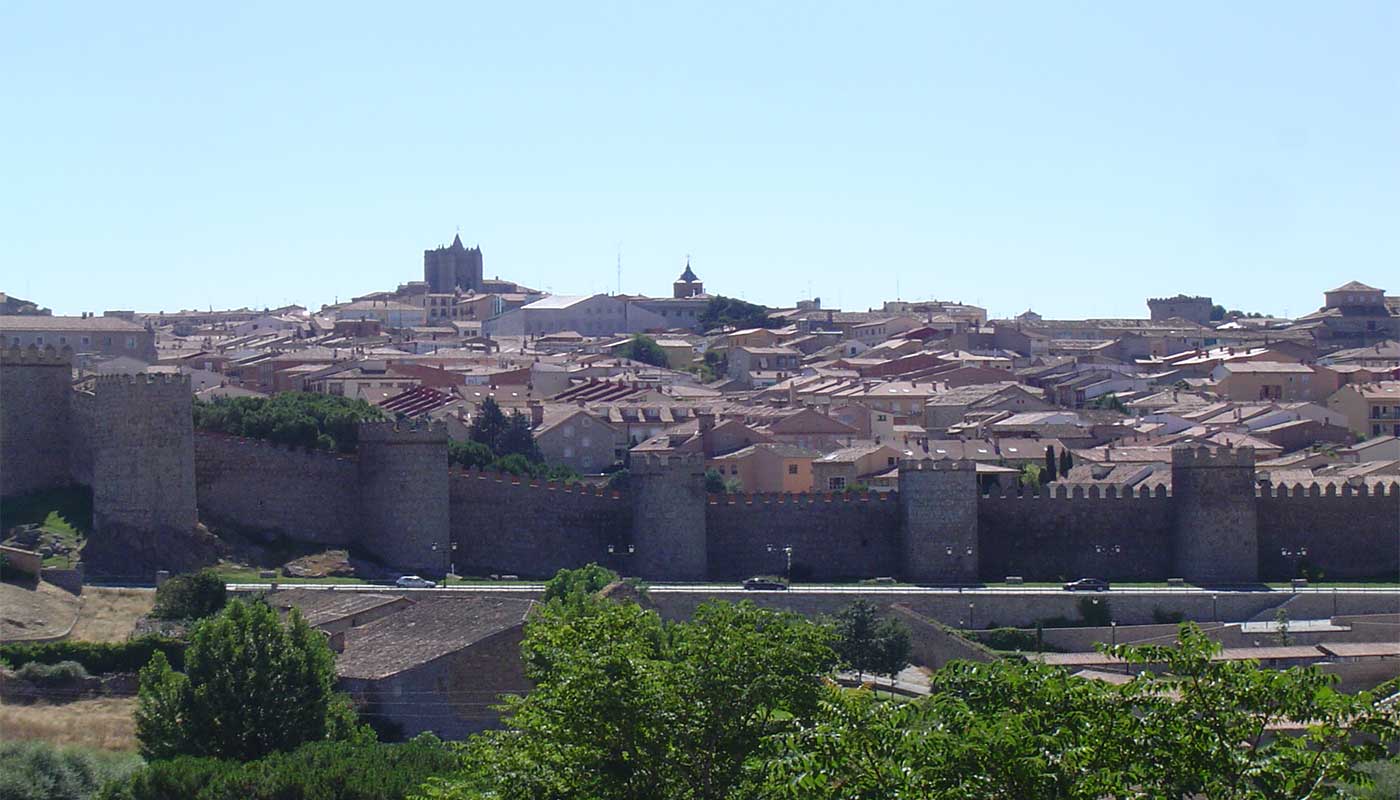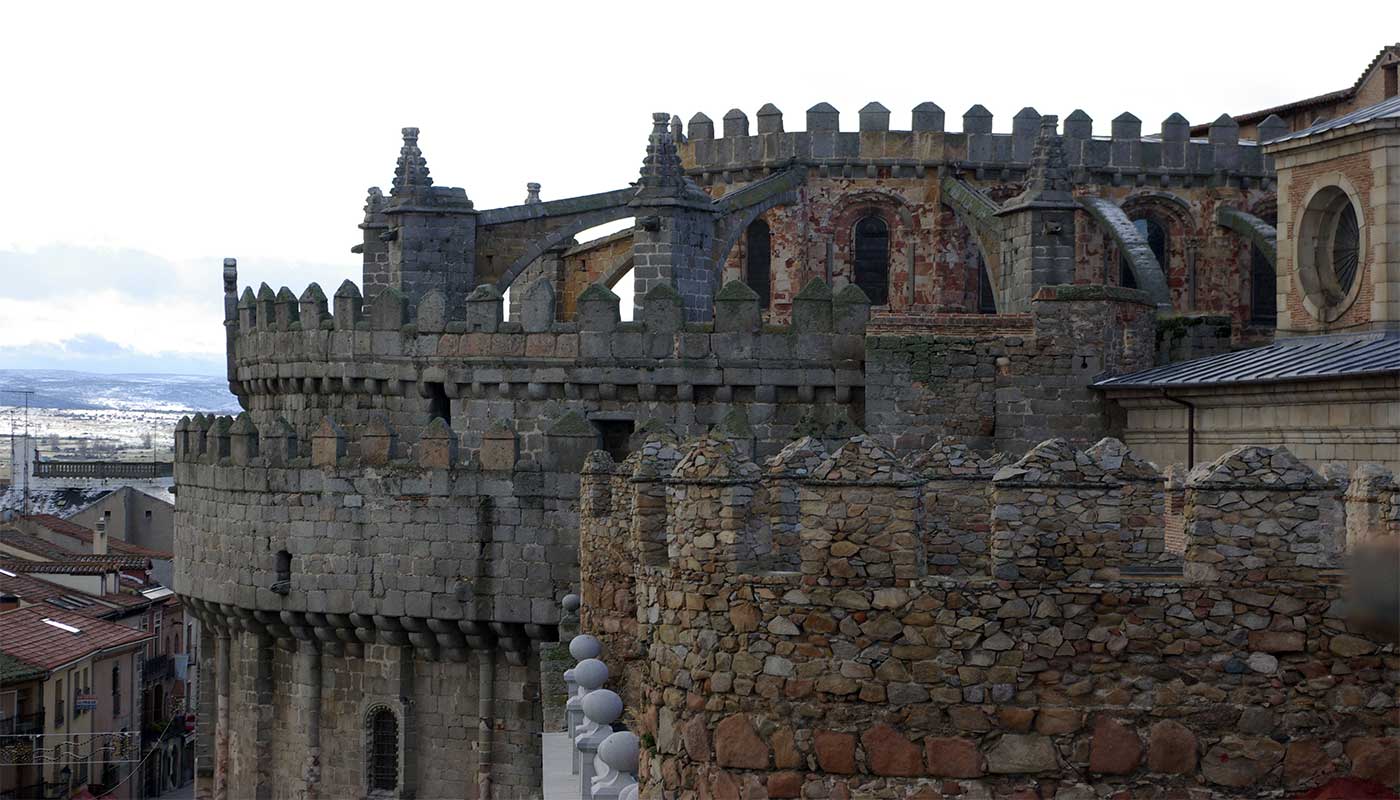Ávila

The medieval walls of Avila was started in 1090. It is preserved almost intact and is the world’s largest fully illuminated monument.
Avila
Avila is a Spanish city located in the autonomous community of Castile and Leon, capital of the province of the same name. Its medieval old town, in excellent condition, was declared a World Heritage Site in 1985.
The city name originates from the peoples and tribes that inhabited for millennia the province. The first were the vetones, who called Obila (high mountain).
The Romans also left their mark on the city, which was then in today’s Old Town, the part surrounded by walls, bridges, walkways, mosaics or the Big Market Square are part of the Roman remains that can be seen today.
In the Middle Ages it was the site of the first settlements Visigoths in the Iberian Peninsula. Proof of this is the Temple of Santa Maria de la Antigua founded before the year 687. Later (no data to date) is invaded and occupied by the Muslims and not until the eleventh century that the city was reconquered by Alfonso VI of Leon and Castile.
At the time of the Catholic Monarchs (second half of the fifteenth century and XVI century) the city is reborn thanks to the splendor of the court. However, during the seventeenth and eighteenth centuries the region suffers massive depopulation to the point that just were about 4000 inhabitants.
With the arrival of the railway in the nineteenth century the city became, until today, an important link between Madrid and France. Among its historical and tourist attractions include:
Walls of Avila (XI-XI centuries): The medieval work was started in 1090. It is preserved almost intact and is the world’s largest fully illuminated monument.
Cathedral of Avila: It is not known exactly when construction began but estimated it was about the year 1091 with funds raised to build it by Alfonso VI of León. It is the first Gothic cathedral of Spain and ends built in the fifteenth century. In 1475 his famous mechanical watch is constructed.
Basilica of San Vicente: This Romanesque temple, the largest and most important of the city after the Cathedral, is considered one of the most outstanding works of this architectural style across the country. Its construction started in the year 1130. It is a National Monument since 1882.
Real Monastery of St.Thomas: Gothic style, was founded in 1480 in honor of St. Thomas Aquinas. The Catholic Monarchs chose it as a summer residence and tomb of the heir to the throne Prince Don Juan. The sarcophagus, which is of great beauty, is still preserved. The remains of the infant disappeared until today without news of their fate.
To book this tour please contact us through our contact form or making click in the below green button. We will be in touch with you shortly and will provide you with price and details.
Are you in a tour mood?



